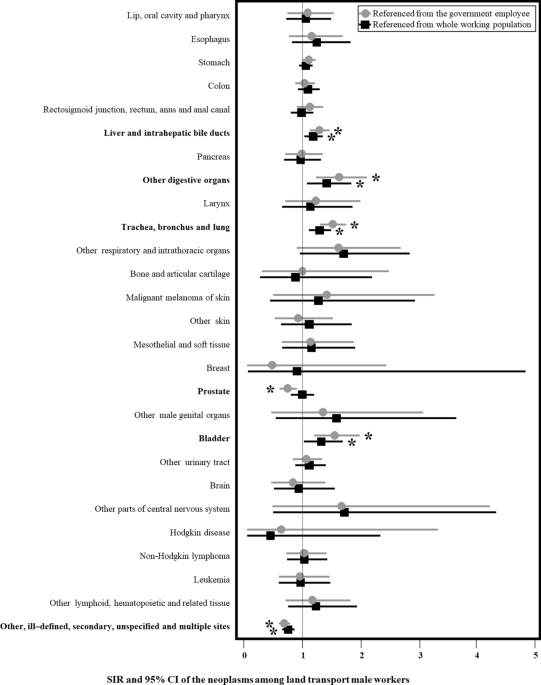Ethical Considerations
The study’s data were anonymized before being provided to the authors by the National Health Insurance Service (NHIS). The research design was approved by the Institute Review Board (IRB) of Yonsei University Health System in Seoul, Korea (IRB number: Y-2017-0100). Since this data was derived from the secondary NHIS database, informed consent was not required.
Data Collection
Data spanning from 2002 to 2015 were extracted from the Korean NHIS database. The NHIS offers mandatory public health insurance that covers medical services, including national health, medical aid, and long-term care insurance for all Korean citizens. Almost the entire Korean population is included in the National Health Insurance system, with all citizens expected to enroll in this public health framework.
All hospital visit data were categorized using the standardized protocol based on the Korea Classification of Diseases and Causes of Death, 4th edition, aligned with the International Classification of Diseases, 10th revision (ICD-10). Diagnoses were reported using ICD-10 codes. The NHIS database encompasses both qualification and claims medical service data, detailing age, sex, region, income, insurance type, identification numbers, and family information. The medical service data logs all covered inpatient and outpatient procedures and prescriptions. The NHIS also offers complimentary annual or biennial health screenings that assess chronic conditions, mental health, and lifestyle factors. We utilized this screening data to evaluate lifestyle variations between RTWs and the general population.
Study Participants
The NHIS database reported a patient count of 50,908,646 in 2011, increasing to 52,034,424 in 2015, thereby covering approximately 98% of Korea’s residents. The NHIS comprises two core services: 97% medical care and 3% medical aid. The medical care segment consists of four insurance types: employee subscribers, employee dependents, district subscribers, and district dependents. For selecting RTW participants, we included male individuals aged 25 to 69 years who had NHIS eligibility as employee subscribers in 2006. Participants with any cancer claims from January 1, 2002, to December 31, 2005, were excluded to ensure only incident cases were considered. RTWs were defined as workers in the road transportation sector, categorized under section H ‘transportation and storage’ according to the latest Korean national standardized industrial classification.
Definition of Job Exposure
Occupational studies often face challenges due to workers frequently changing jobs or industries. Previous studies employing a combined approach evaluated job exposure factors using occupational class and industry sectors. We adopted three distinct assessments of job exposure: (1) fixed RTWs for the first year (2006), (2) fixed RTWs for the first three years (2006-2008), and (3) a dynamic cohort based on annual job changes. The RTWs included in the analysis were those engaged in the road transport industry from 2006 to 2014, measuring person-years at the enrollment year or last cancer follow-up in 2015. The reference group followed the same logic for each cohort definition.
Cancers
All inpatient and outpatient claim data were coded using ICD-10, which was implemented in Korea in 1995. Cancers were identified by claims reflecting malignant neoplasm ICD-10 codes (C00–C97). Only the first diagnosed cancer for each patient during the follow-up was included. A total of 98 cancer types were classified into 27 categories as per the Korean Standard Classification of Diseases based on the ICD-10. We excluded female genital organ cancers and malignant neoplasms of the eye and adnexa, as these were absent in the participant data.
Health Status
To evaluate the health status tied to occupation, we employed the oldest national health screening examination data available before cancer diagnoses within the study period. This included 549,222 workers and 5,380 RTWs taking part in health screenings, which provided insights into health behaviours (e.g., smoking, alcohol use, exercise) and anthropometric measures (e.g., BMI, fasting glucose levels, lipid profiles, liver function, and blood pressure).
Statistical Analysis
We contrasted the crude incidence, standardised incidence ratios (SIR), and 95% confidence intervals (CIs) of cancer risks among RTWs with those of the entire working population, adjusting for age using a direct standardisation method. Age-specific cancer incidence was computed for each five-year group among RTWs, which helped estimate expected cases within the whole working population. The ratio between observed and expected cases yielded the direct age-SIR. Government employees and the general working population served as comparative reference groups for the analysis. A SIR exceeding 1, particularly when the lower limit of the 95% CI is also above 1, indicated a significantly elevated cancer risk within the RTW group. The mid-P test was employed for calculating 95% CIs. We conducted sensitivity analyses using varying cohort definitions to check SIRs and 95% CIs for statistically significant cancer risks. Analyses of confounding variables considered factors such as BMI, fasting glucose levels, and lifestyle behaviours between RTWs and the overall working population through Student’s t-test or chi-squared tests, all executed via SAS software, version 9.4.


